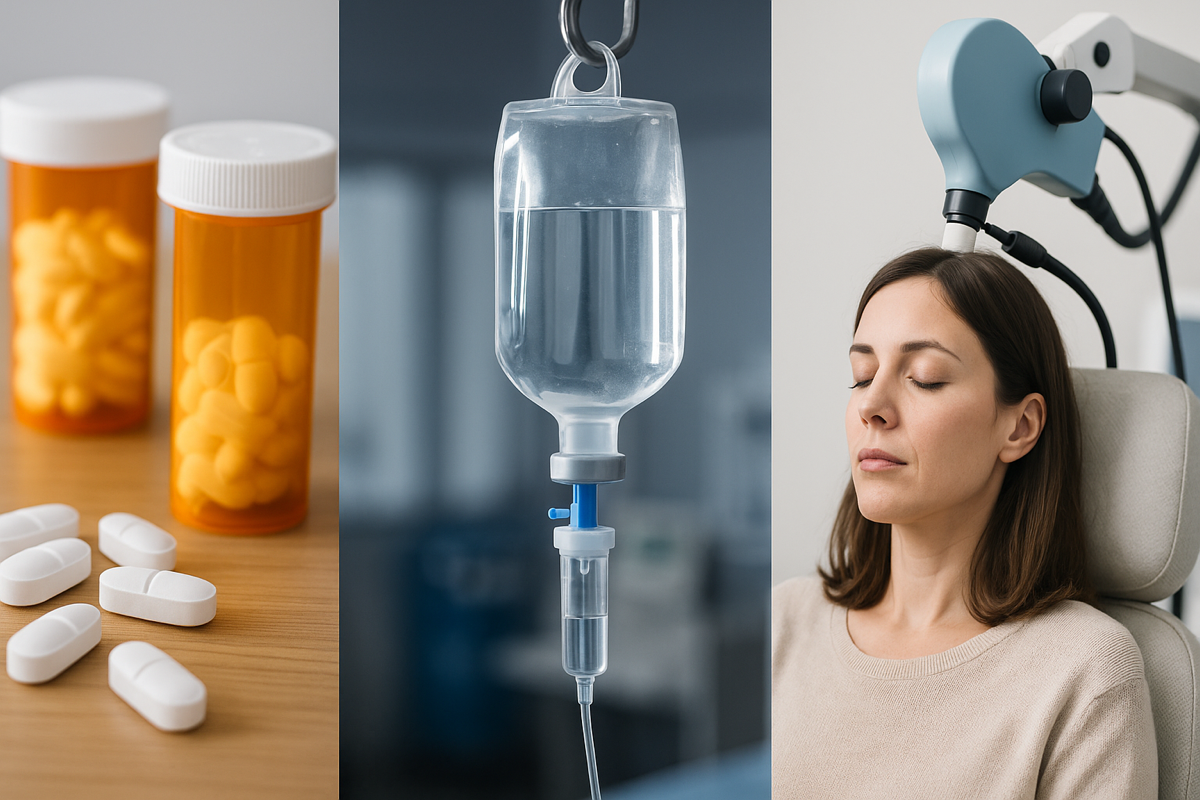Finding the right treatment for depression and other mood disorders can feel overwhelming. With new therapies like ketamine infusions and transcranial magnetic stimulation (TMS) joining traditional antidepressant medications, patients now have more options than ever before. But how do you know which approach may be the best fit for your needs?
Below, we’ll explore each option, how it works, and who it may help most.
Traditional Antidepressants: The Established Route
Antidepressants, such as SSRIs (selective serotonin reuptake inhibitors) and SNRIs (serotonin-norepinephrine reuptake inhibitors), have been the backbone of depression treatment for decades.
- How they work: These medications adjust brain chemistry by increasing the availability of neurotransmitters like serotonin and norepinephrine, which regulate mood.
- Pros: Widely available, often covered by insurance, and effective for many patients.
- Cons: It can take several weeks to notice benefits, and side effects (such as weight gain, sleep changes, or sexual dysfunction) may occur. Not everyone responds to the first medication they try, so switching or combining meds may be needed.
Best for: Patients with mild to moderate depression, or those who haven’t tried medication before.
Ketamine Therapy: A Fast-Acting Alternative
Originally used as an anesthetic, ketamine has gained attention in recent years for its rapid antidepressant effects. Administered in low doses via IV infusion or nasal spray (Spravato, an FDA-approved formulation), ketamine is often considered when traditional medications haven’t worked.
- How it works: Ketamine impacts the brain’s glutamate system, helping repair and create new neural connections. This may “reset” brain circuits involved in mood regulation.
- Pros: Relief can happen within hours or days, making it particularly valuable for patients with severe depression or suicidal thoughts.
- Cons: Treatment requires specialized clinics, repeated sessions, and can be costly. Some patients may experience dissociation or dizziness during infusions.
Best for: Patients with treatment-resistant depression who haven’t found relief with standard antidepressants.
TMS (Transcranial Magnetic Stimulation): A Non-Medication Option
TMS is a non-invasive procedure that uses magnetic pulses to stimulate areas of the brain linked to mood. It’s typically done in a clinic over multiple sessions.
- How it works: Magnetic fields target the prefrontal cortex, improving activity in areas that are underactive in people with depression.
- Pros: No systemic side effects like weight gain or sedation, non-invasive, and does not require anesthesia.
- Cons: Requires daily sessions for several weeks, and results can vary. Some patients may experience mild headaches or scalp discomfort.
Best for: Patients who want to avoid medication side effects or who haven’t responded to antidepressants.
How to Decide: Questions to Ask Yourself
- Have I already tried traditional antidepressants without success?
- Do I want a non-medication option (TMS) or am I open to newer treatments like ketamine?
- How quickly do I need results? (Ketamine is fast; antidepressants take longer.)
- What are my financial and insurance options?
Final Thoughts
There is no one-size-fits-all approach to depression treatment. For some, traditional antidepressants provide long-term stability. For others, newer therapies like ketamine or TMS offer hope when other methods fall short.
At Vitality Wellness, we help patients explore their options and find the treatment plan that works best for them—whether that’s medication, therapy, or advanced interventions.
